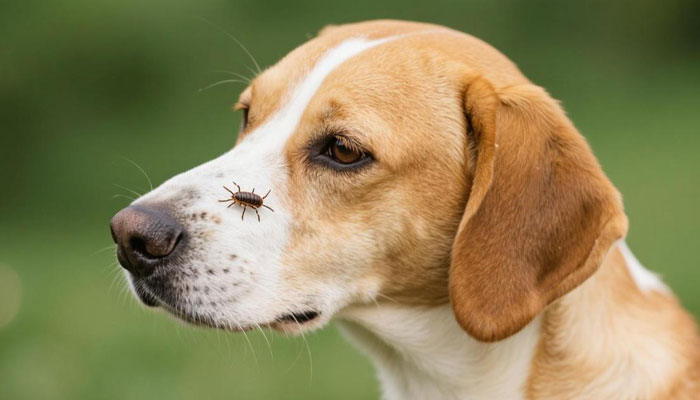Flea Treatment for Dogs: Cleaning Method

Once fleas are discovered on a dog, it becomes a major hassle. First, the dog will suffer intense itching and extreme discomfort from fleas clinging to its skin, causing heartache for the owner. Second, fleas may spread to family members, posing health risks. Therefore, beyond routine prevention, flea treatment for dogs must be initiated promptly upon detection to effectively resolve the issue.
Flea Treatment for Dogs: 7-Step Home Flea Elimination Plan
Basic Cleaning: Bathe Your Dog in a Tub
This is the crucial first step in flea treatment for dogs. Fill a tub with lukewarm water (preventing water loss), use a gentle, dog-safe shampoo, and thoroughly wash the coat down to the skin. Pay special attention to the ears, tail, and belly—areas where fleas most commonly gather—to ensure initial removal of surface fleas.
Soak Treatment: Drown Hidden Fleas
Keep your dog seated in the tub for an extended period. While combing other areas, use the retained water to drown fleas around the tail and deep within the fur. This reinforces the flea treatment effectiveness and prevents fleas from escaping by moving.
Thorough Rinse: Remove Residue and Eggs
Rinse your dog’s coat thoroughly with clean water for at least 5 minutes. Use a handheld sprayer or slowly pour water from a cup to ensure every area is rinsed. During rinsing, plug your dog’s ears with cotton balls (or gently fold the ears closed) to prevent water from entering and causing ear problems. This step reduces residual flea feces and eggs, clearing the way for subsequent flea treatment for dogs.
Proper Drying: Avoid Secondary Irritation
Gently blot the dog’s coat dry with an absorbent towel using your usual drying method. Avoid vigorous rubbing that could damage the skin. Keeping the skin dry not only ensures the dog’s comfort but also prevents a damp environment from attracting fleas again, enhancing the long-term effectiveness of flea treatment for dogs.
Thorough Combing: Identifying Missed Fleas
Once the coat is partially dry, use a flea comb or appropriately sized fine-toothed comb. Slowly comb from the tail toward the head, ensuring each stroke reaches close to the skin. This step acts as the “inspection phase” for flea treatment for dogs, capturing any fleas or eggs that may have survived rinsing.
Secondary Cleaning: Eliminating Residual Issues
If fleas, flea droppings, or eggs are found during combing, immediately remove them with paper towels or tweezers. Then, rinse the affected area again with clean water to ensure no fleas remain,
achieving a “zero-residue” standard for flea treatment for dogs.
Daily Maintenance: Sustaining Treatment Effectiveness
Flea treatment for dogs is not a one-time procedure. Daily grooming with a flea comb and weekly baths following the above steps are essential. Consistent care prevents flea recurrence, keeping your dog continuously free from flea troubles.
Flea Treatment for Dogs: Essential Companion Cleaning
Beyond direct treatment for your dog, environmental cleaning is a crucial complement to flea treatment:
Cleaning Your Dog’s Living Areas: Keep the dog bed dry. Regularly expose sleeping pads to direct sunlight to sterilize them and disrupt the flea habitat. Weekly clean areas prone to dirt buildup—such as your dog’s paws, ears, and anal glands—to reduce conditions favorable for flea breeding.
Comprehensive Home Cleaning: Thoroughly vacuum all floors, paying special attention to corners, edges of hardwood floors, and the fibers of carpets and rugs—these areas often harbor missed fleas or eggs. Only by cleaning both the environment and the dog simultaneously can flea treatment for dogs be truly effective and prevent reinfestation.
admin
-
Sale!

Washable Pet Cooling Pad for Cats and Dogs
$10.99Original price was: $10.99.$9.99Current price is: $9.99. This product has multiple variants. The options may be chosen on the product page -
Sale!

Washable Cat Window Hammock Cooling Bed
$23.99Original price was: $23.99.$22.99Current price is: $22.99. -
Sale!

Tropical Amphibian Rainforest Tank, Lizard Cage
$38.99Original price was: $38.99.$36.99Current price is: $36.99. -
Sale!

Silent 4-in-1 Waterproof Charging Dog Hair Trimmer
$49.88Original price was: $49.88.$47.99Current price is: $47.99.